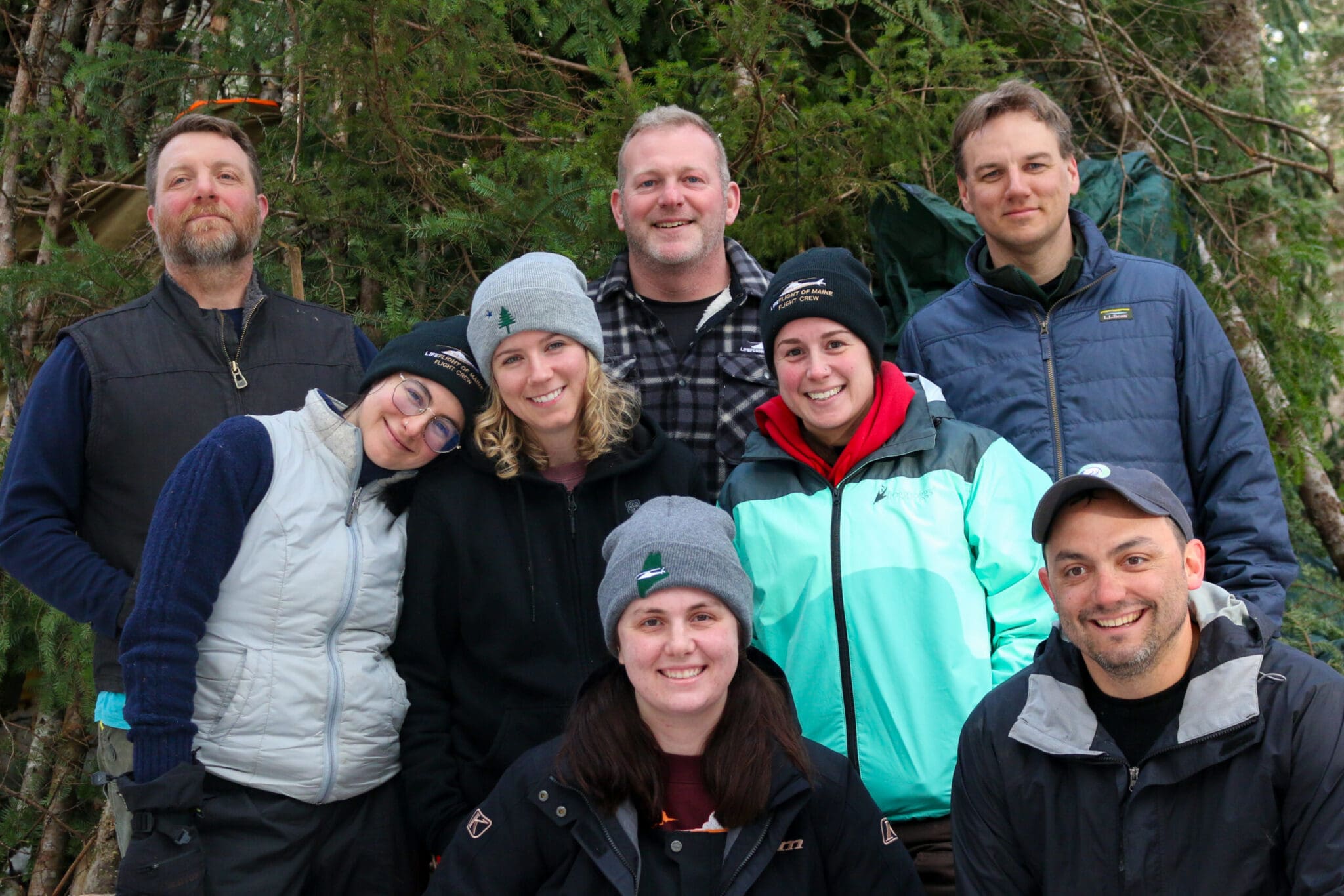Winter Survival Training
Safety is a core value at LifeFlight, and has been since Day 1. Safety on the ground, and safety in the air. Safety for patients and safety for operations. Every department, every crew, and every member of the organization share responsibility for safety. This disciplined focus on safety is rehearsed and affirmed regularly. There are briefings, meetings, notices, and required trainings.
One of those exercises offered annually is Winter Survival Training. Every member of the flight crew has been through it. More senior crew members lead a group into the Maine woods in the dead of winter to train in real-life circumstances for some of the challenges more unique to Maine.
Most of Maine is rural. Much of the state is truly remote and densely wooded. Winter Survival Training focuses on preparing crew members for prolonged exposure to Maine winter, whether it’s to extract a patient or for an unexpected situation, such as an emergency helicopter landing.
In February 2025, nine members of the LifeFlight team trekked into woods outside of Calais for the 24-hour training exercise.
Winter Survival Training, along with several other critical training programs LifeFlight provides to its crew, was made possible by the generous support of L.L.Bean. Their gear kept the team warm and dry during this training exercise, and their generosity helps keep LifeFlight’s patients and crew safe every day and night of the year.
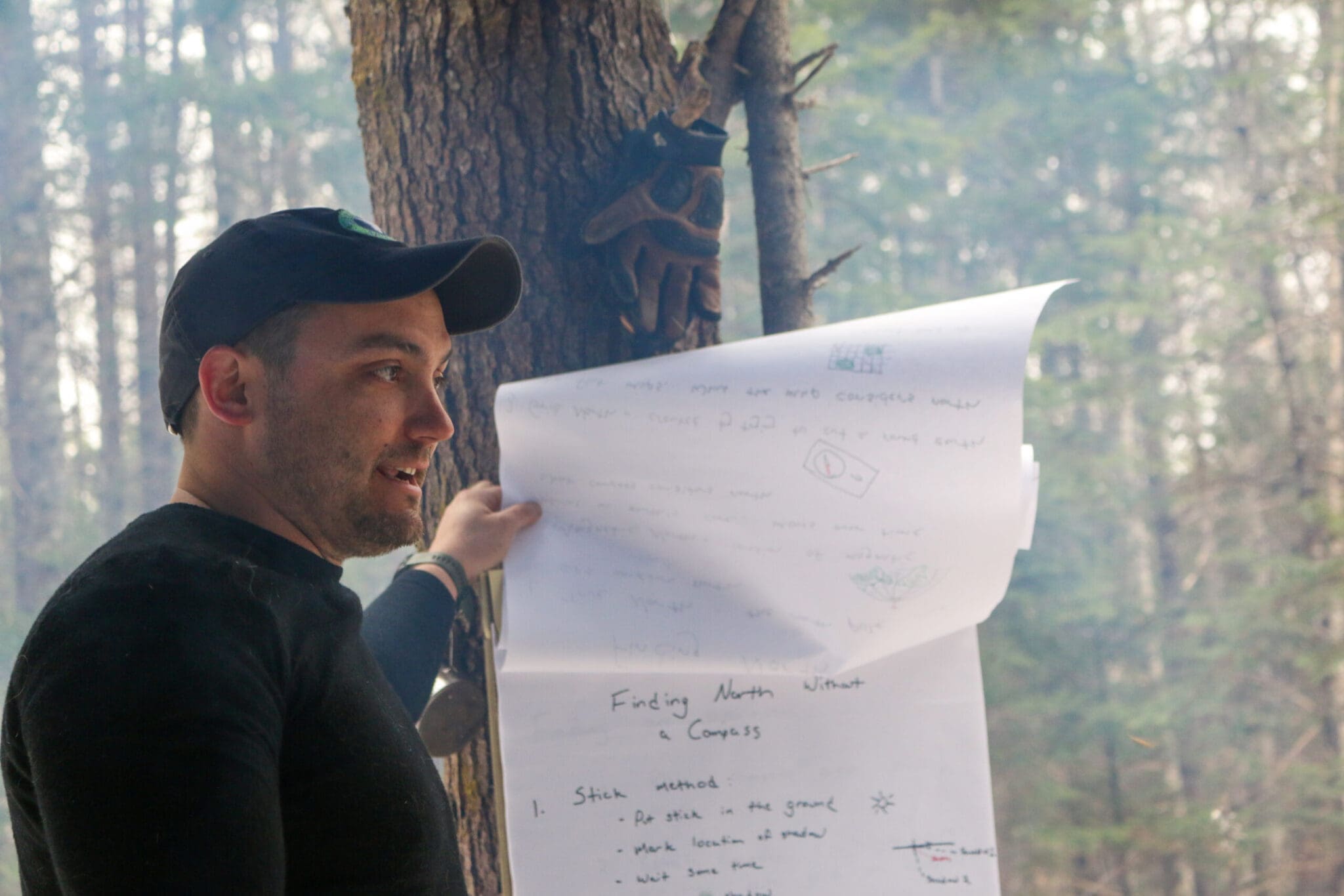
Flight paramedic Jeff Hammersmith led his colleagues through Winter Survival Training. He joined the LifeFlight team in 2021. He is a military veteran, an experienced outdoorsman, and a highly skilled paramedic.

At LifeFlight, safety is everyone’s responsibility. CEO Joe Kellner participated alongside new flight crew members in this year’s Winter Survival Training.
The training began at 8:00am on February 26, 2025. Participants drove about eight miles out of Calais, and then hiked in another half mile to set up camp.
With the daytime temperature hovering just above freezing and snow nearly two feet deep, the initial task was to make sure everyone was adequately equipped to stay warm (enough) and dry during the training.
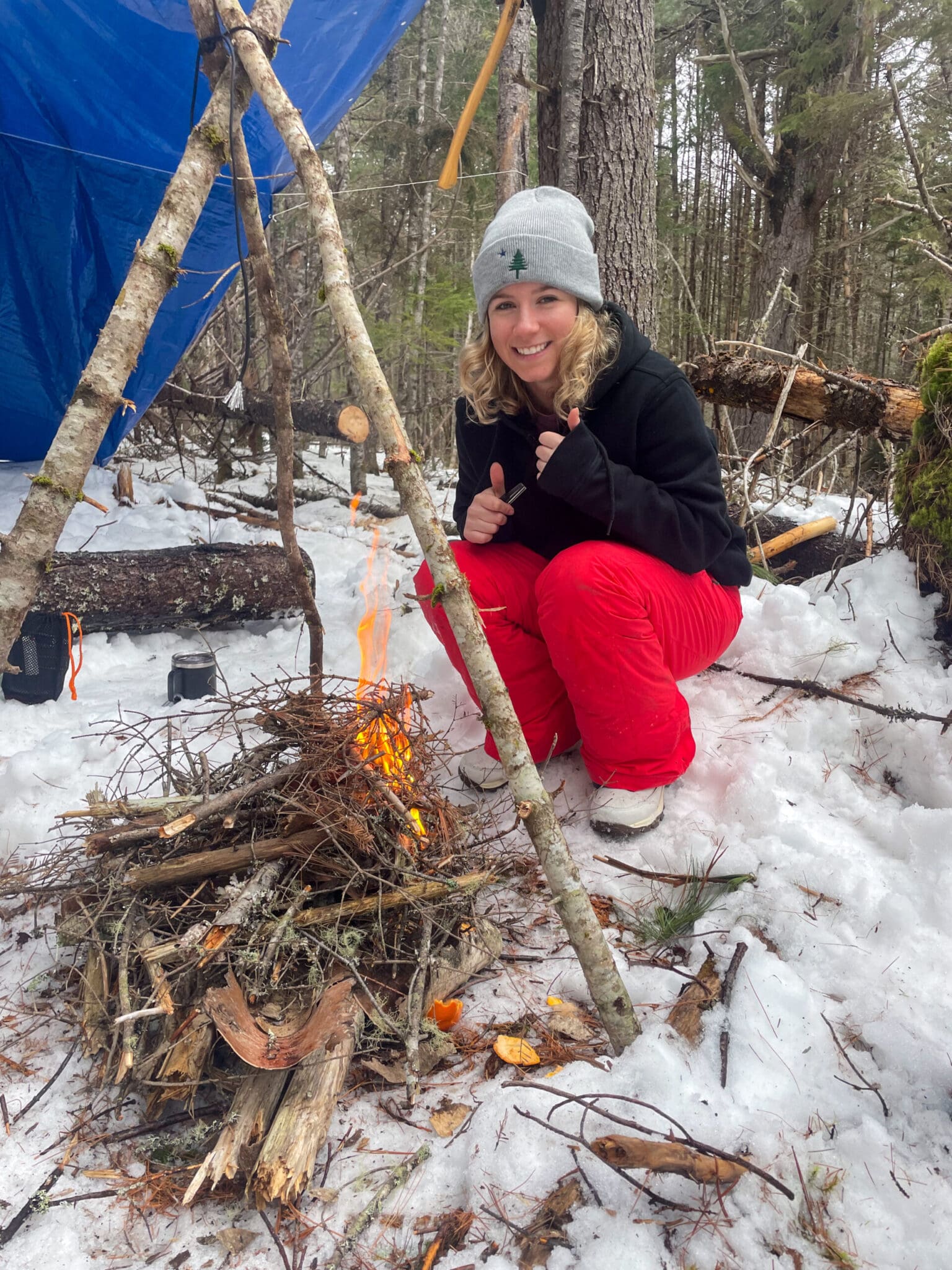
The first lesson covered techniques for building a fire in all kinds of conditions. Staying warm is a top priority, as extreme cold can quickly have adverse effects on patients, crew, and medical equipment.
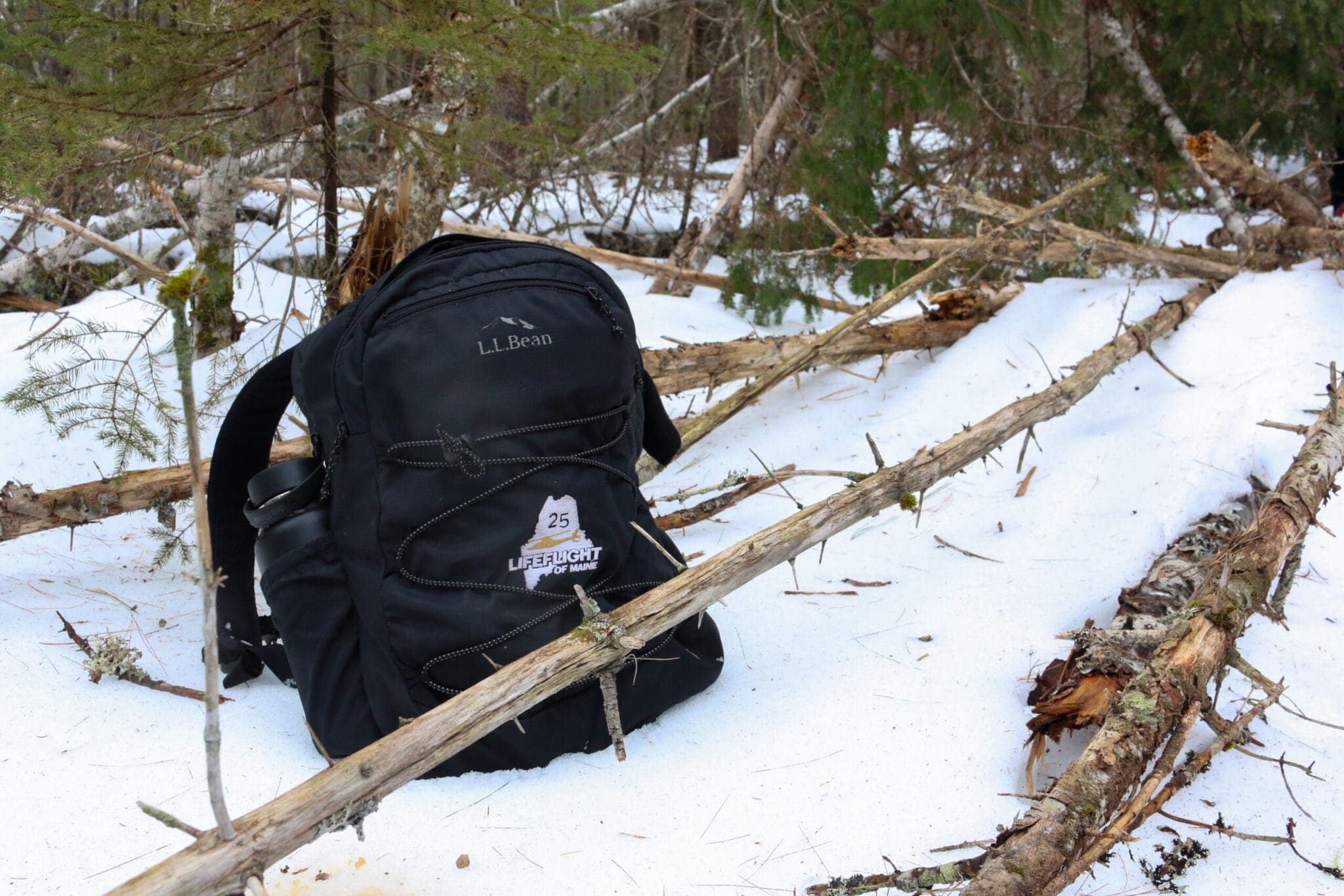
With the fire going, the next exercise was to construct a shelter to shield participants from wind and precipitation. LifeFlight crews carry a survival gear bag, which includes a tarp, on every transport. Participants constructed makeshift shelters using tarps and tree limbs.
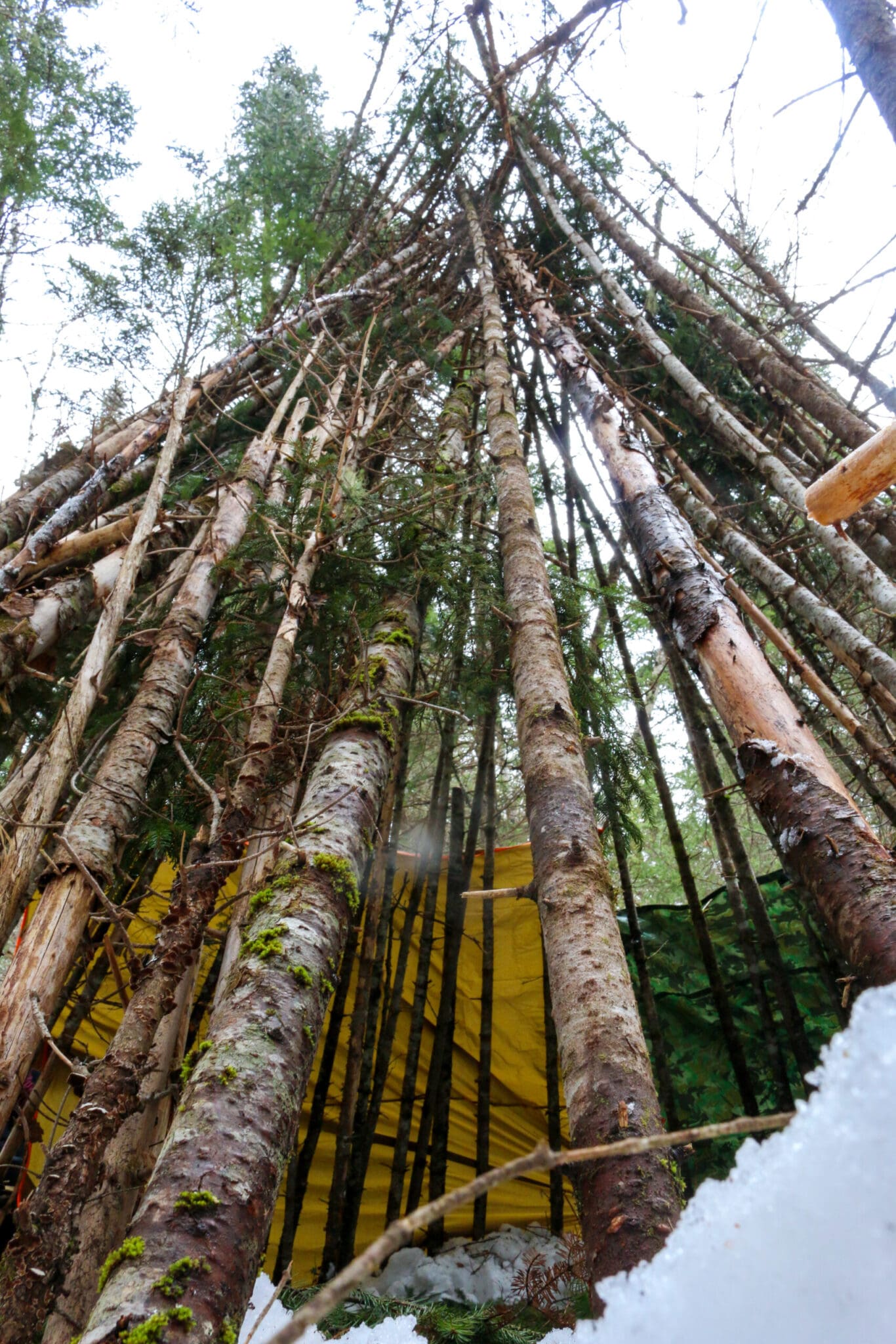
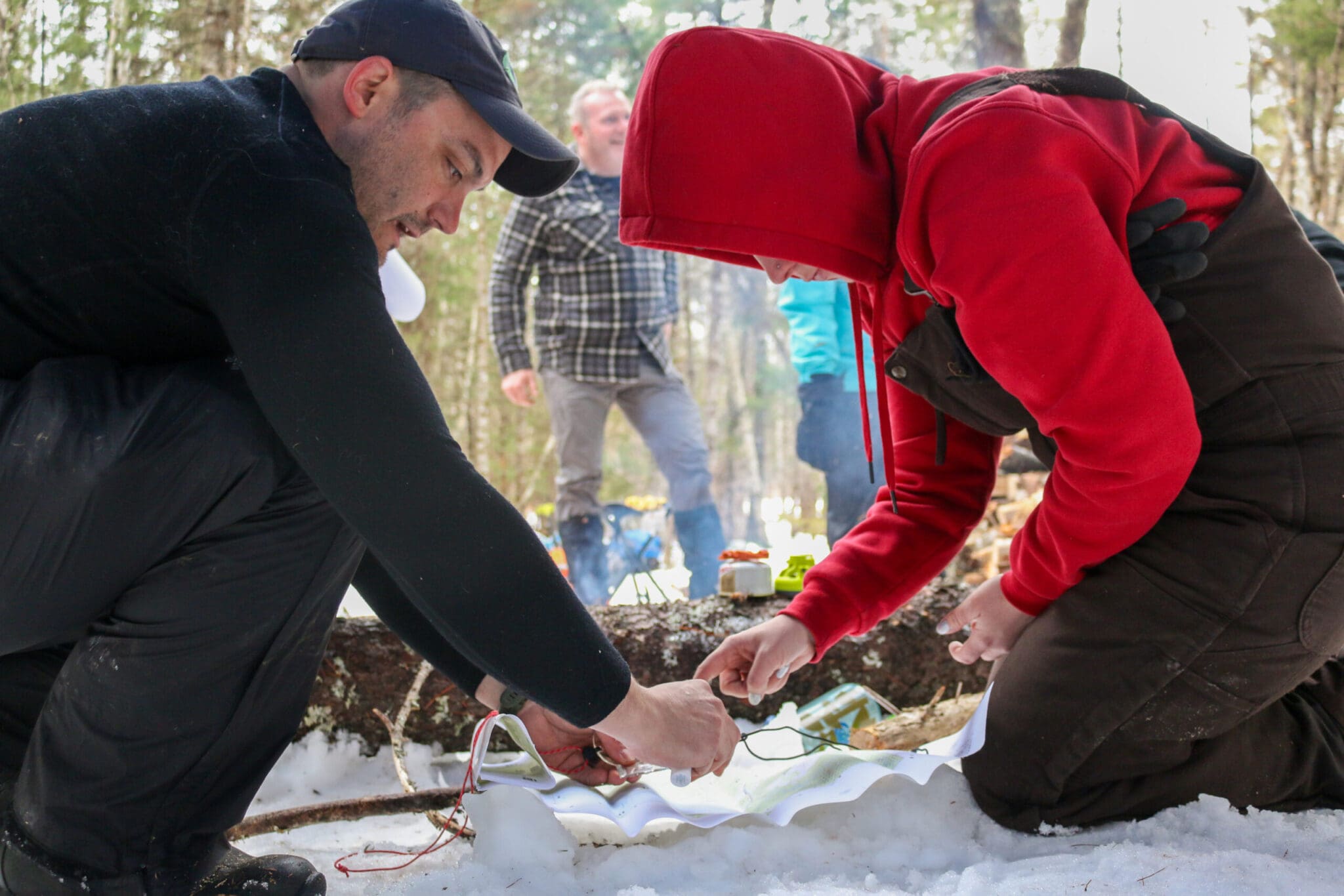
The next lesson covered land navigation. Jeff instructed participants on navigation techniques using a map and compass (i.e. without a cell signal or GPS device).
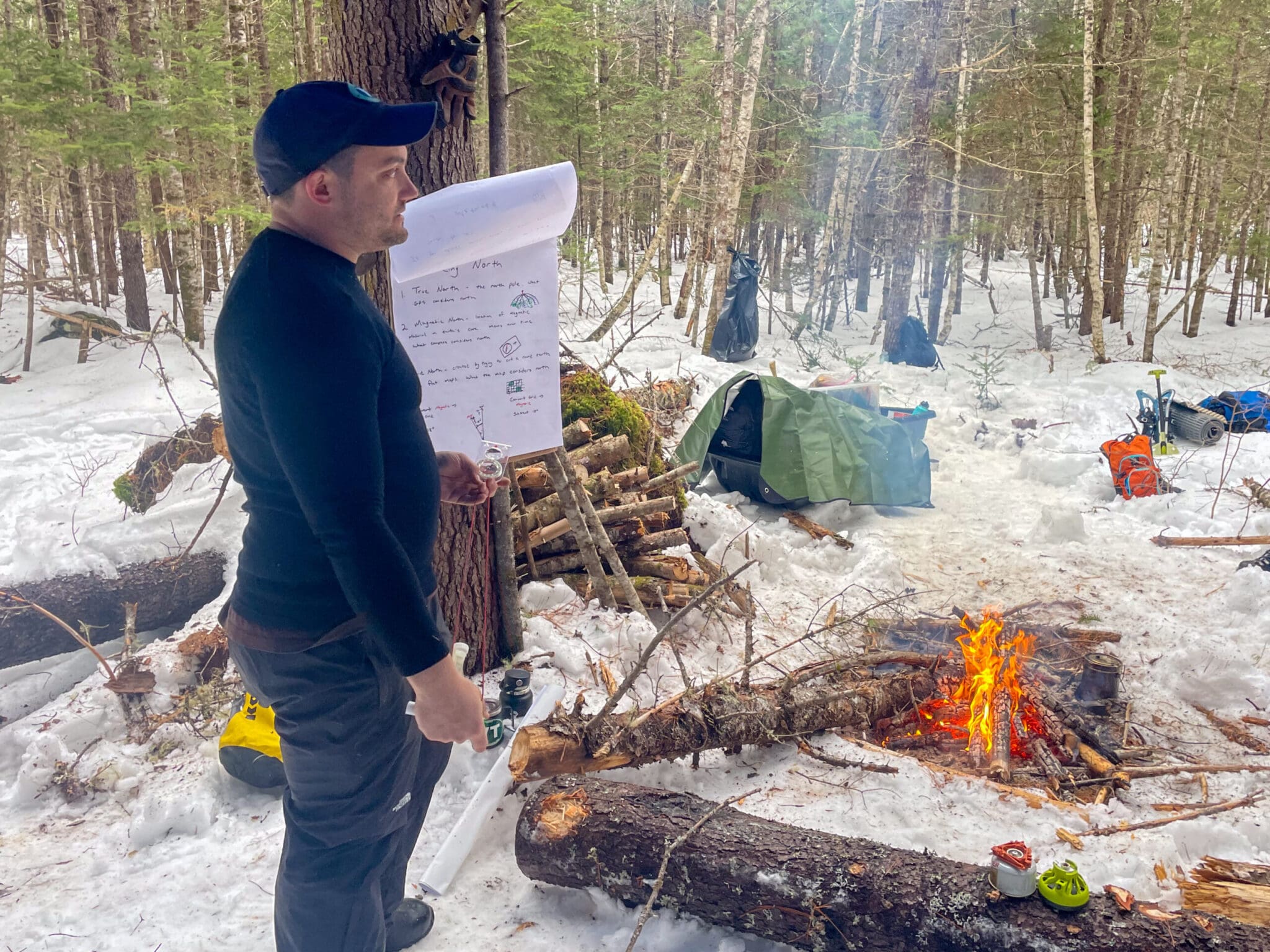
After the “classroom” instruction was complete, participants were challenged to put what they had learned into practice. They were given details of a hypothetical snowmobile accident that left a rider deep in the woods with a critical injury. Participants had to navigate as a team to the patient’s location using a compass and natural landmarks.
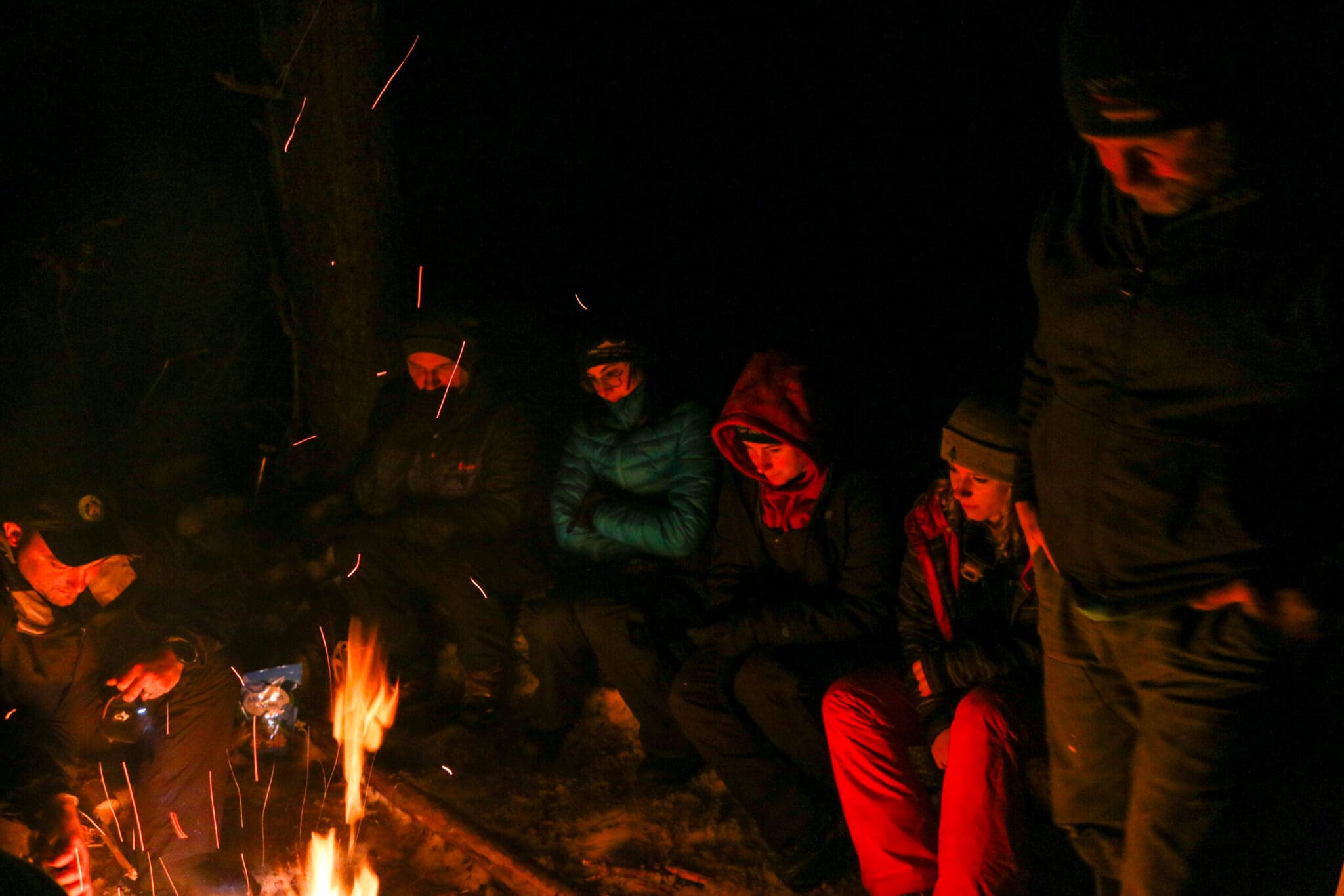
The sun set, and Jeff expertly cooked dinner on the fire. Participants huddled around as the temperature dropped to 18 degrees.
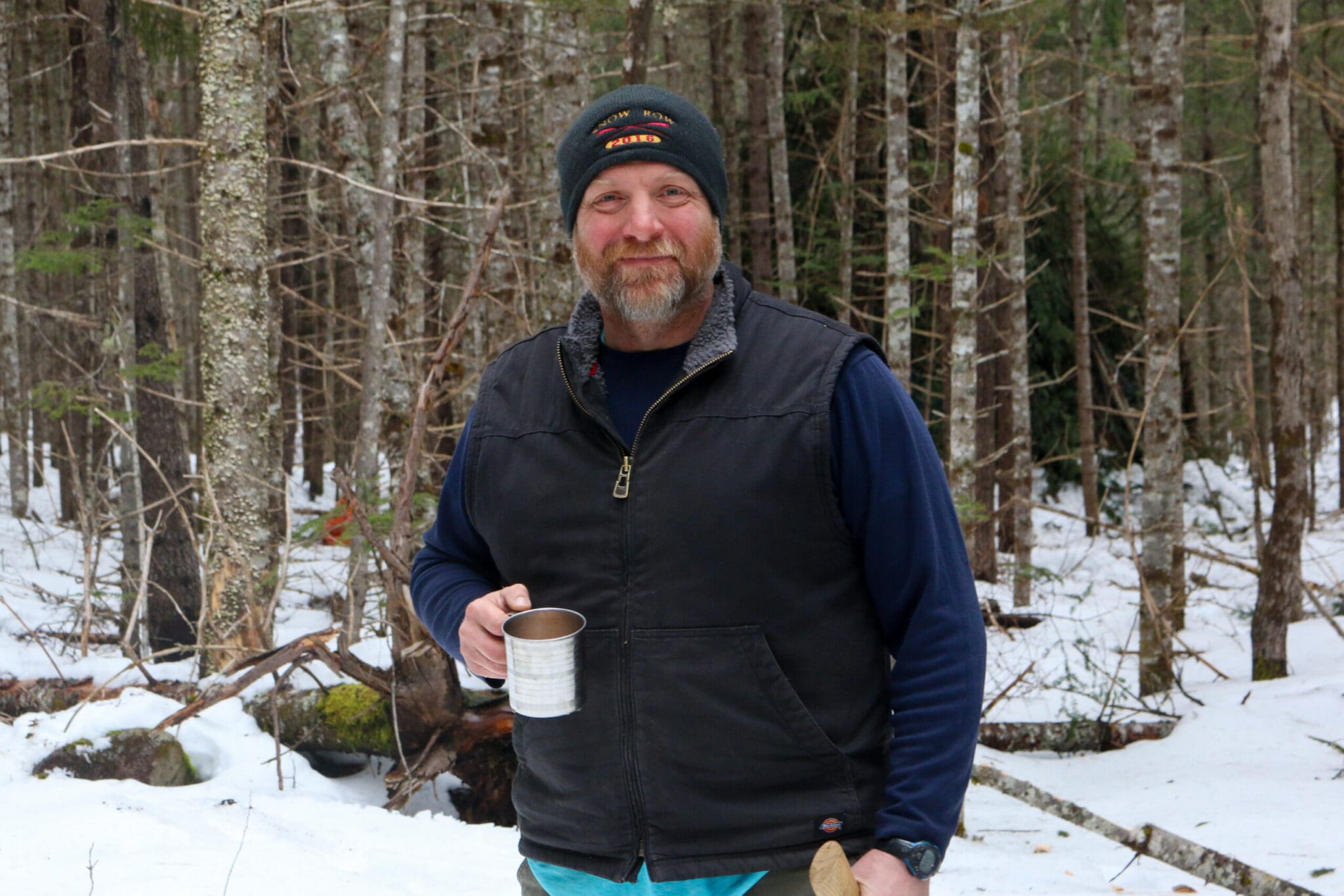
Despite the cold, there were still a few smiling faces as the sun rose the following morning and Winter Survival Training concluded.
The 2025 Wilderness Survival Training team
